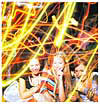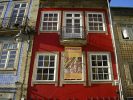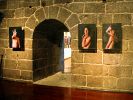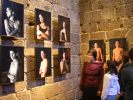 |
 |
 |
|||||||||
|
|
Contemporary Hungarian photography is not very well known in Westren Europe, and there is no strategy aiming for a wider publicity. The events organized by Hungarian House of Photography – Mai Manó House mean a welcome exception. Due to a certain dynamism shown by intermediate and academic level tuition, however, an increasing number of young artists reject the traditional values and manners of photography to seek an expressive form-language comparable to contemporary fine art. Long gone are the days of Brassai or Kertész, who emigrated to Paris in the twenties to become the standard-bearers of Hungarian photography. More names should be mentioned here, but the list would get to long. However we cannot omit the co-founder of Magnum Agency, Robert Capa, whose photos taken on the battlefields of Normandy and Spain have circled the global press to become a referential point in the trade. The exhibition about to be shown can be viewed as a follow-up of the invitation I got from Mai Mano House, with the aim of contacting me with Hungarian artists and projects. On my last visit, I came to the conclusion that while there are photographers working in the confines of a traditional aesthetic field, characteristic of humanistic photography, there are a number of young artists who use a less formal language, giving their works of art a more modern form. Taking our museum-space in consideration, we have chosen four young ladies, who we think are emblematic representatives of this new generation of creative artists, and who are – by their very diversity - able to reflect to questions present in contemporary society. Gabriella Csoszó’s art talks about metamorphoses, that take place in the identity of the individual as a result of passing time, showing hoe her models have changed through a period of six years. Katalin Elek Judit becomes a compulsive photographer, taking pictures only of everyday situations in which herself is present as well. Sarolta Szabó focuses on the peripheral territories of the city, where architecture plays an important role in dividing public and private spaces. Finally, Szilvi Tóth is establishing contact with passers-by of the city street, who – mysteriously - waken her curiosity, and acquires a deeper knowledge using her camera as an intermediary. Rui Prata 12. March, 2005
|
|
|||||||||||||







